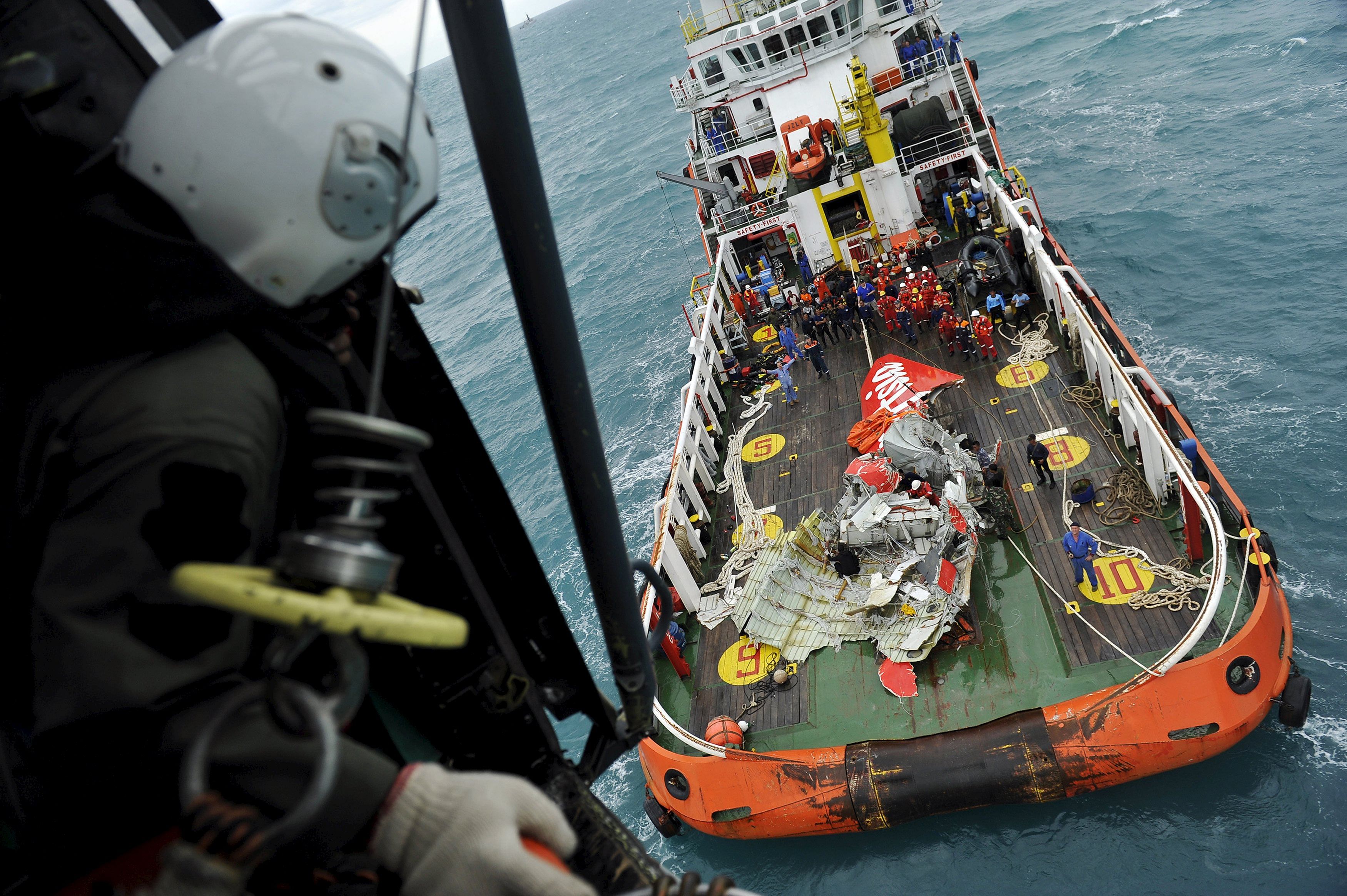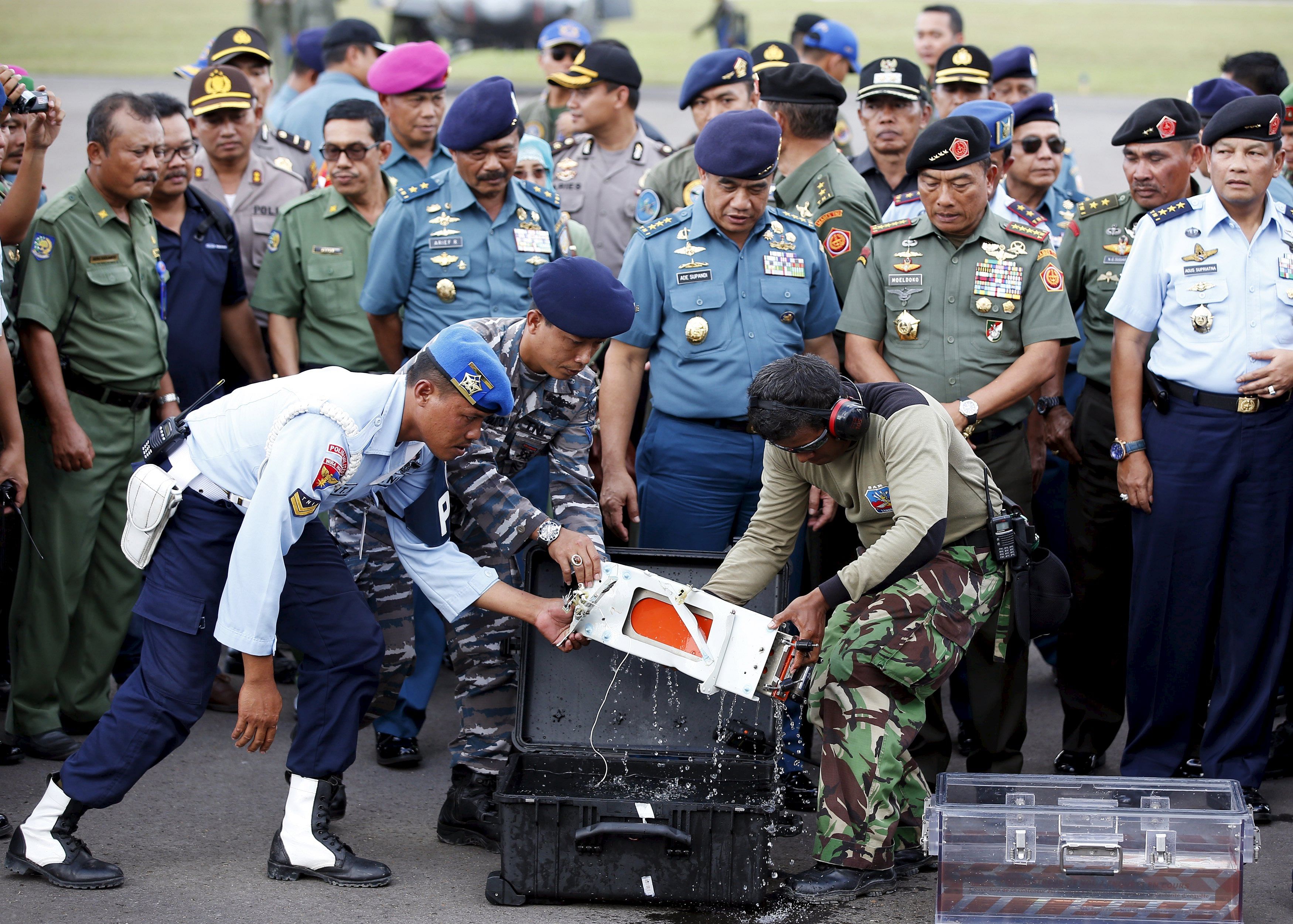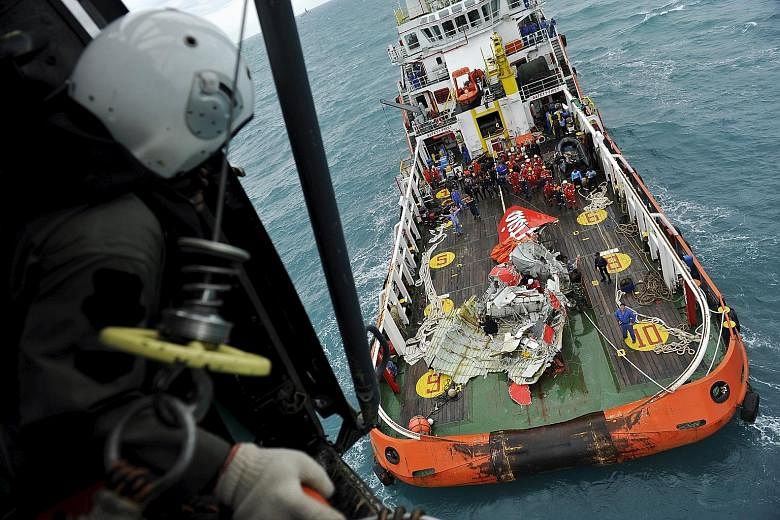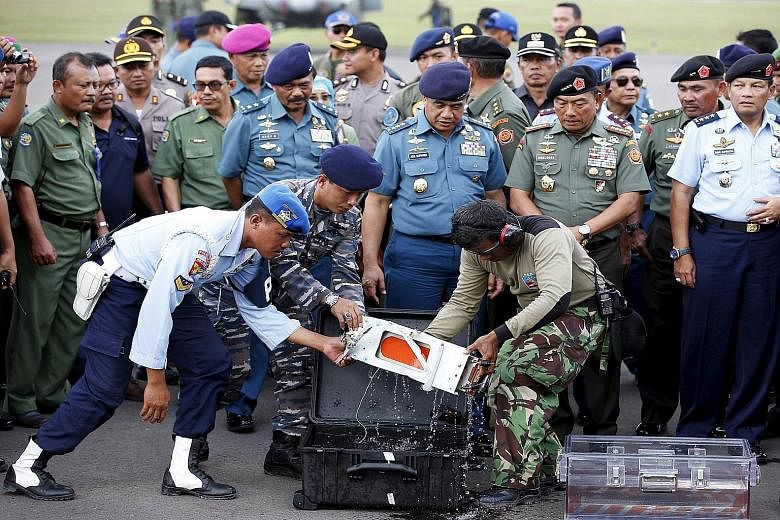Eleven months after an AirAsia plane crashed into the Java Sea killing all 162 people on board, the Indonesian authorities have released a report which raises more questions than answers.
Flight QZ8501 was flying from Surabaya, Indonesia, to Singapore on Dec 28 last year when it disappeared from radar during bad weather and eventually crashed.
Indonesia's National Transport Safety Committee said in a 206-page report yesterday that the Airbus 320-200 went down following a series of technical faults and the inability of the cockpit crew to control the aircraft.
The problem was with the system which controls the rudder - a part of the aircraft's tail.
Cracked soldering in a component had caused it to malfunction and send repeated warning messages to the pilots during the doomed flight, the authority said.
One fact in the report stood out. Records show that the plane had experienced problems with its rudder 23 times in the 12 months leading up to the crash.
This posed the questions: How serious were these problems? Were they fixed? Was Airbus informed of the faults? If no, why not? If yes, were corrective actions prescribed and taken? Was there adequate regulatory oversight by Indonesia's civil aviation authority?
None of these was adequately answered in the report, which instead focuses more on the pilot actions, or in this case, the lack of it.
Mr Michael Daniel, a retired US Federal Aviation Administration official who saw the report, said: "The way it is written and the safety recommendations are weighted more against the pilot actions, pilot training and upset recovery and less on proper air operator maintenance.
"If the high repetitiveness of maintenance discrepancies were resolved, the pilot would not have been put in a situation of trying to resolve the issues in flight. I think the report should have listed the maintenance discrepancies as a causal factor instead of a contributing factor. The pilot actions were consequential to the maintenance errors."
AirAsia's boss Tony Fernandes seemed to suggest shared responsibility, in a tweet following the release of the report, that "there is much to be learnt here for AirAsia, the manufacturer and the aviation industry".
The investigation report also points to inadequate pilot high altitude upset recovery training.
About 40 minutes after the plane left Surabaya, the pilots had asked air traffic control for approval to climb from 32,000 feet to 38,000 feet in order to avoid a storm.
Approval was given for an ascent to 34,000 feet, after which air traffic control lost contact with the cockpit.
It is believed that the rudder fault and the pilots' attempt to recover ended up with the plane entering into an "upset" condition or stall.
A senior investigator with the National Transportation Safety Committee, Mr Nurcahyo Utomo, said yesterday that the Airbus flight crew training manual states that the aircraft will not enter into such a condition and therefore recovery training is "not recommended".

Airbus has not commented but experts said it would be strange if the plane maker had indeed said so because the usual drill is for pilots to be trained to handle all emergencies that they may face during flight.
With so many questions and few answers, the final report on the crash of QZ8501 leaves much to be desired.
Mr Daniel said: "My personal opinion is that on a scale of 1 to 10 for a good accident investigation report, 10 being very good, I put this report as a 5."
With lawsuits set to fly now that the report is out, parties are unlikely to say much except that they will study the findings and implement the necessary corrective actions, if any.

For the families and friends of the 162 who perished, it will be a long wait yet before their questions are answered.




